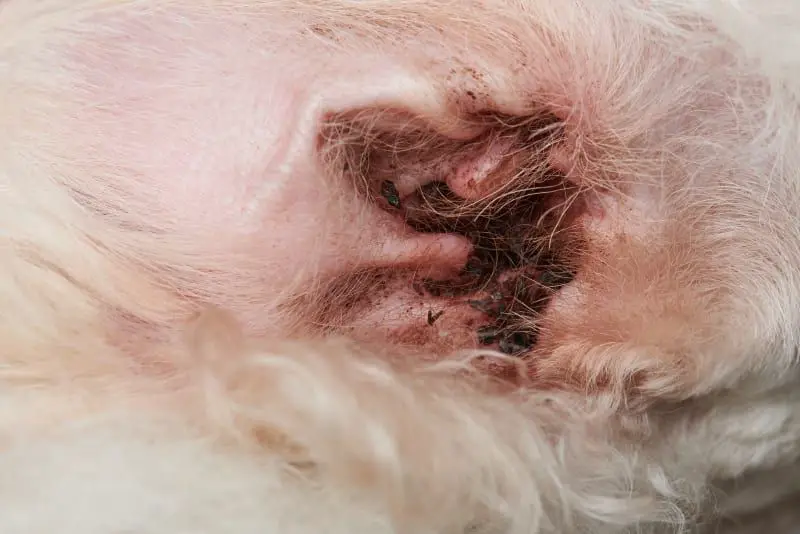How Do You Treat A Cat’S Ear Infection Without Going To The Vet?
Causes of Ear Infections in Cats
Ear infections in cats are often caused by an overgrowth of yeast or bacteria. Common culprits include Staphylococcus, Pseudomonas, and Malassezia yeast (1). Allergies are another major cause of feline ear infections, leading to inflammation and excess wax that traps moisture and debris in the ear canal (2). Foreign objects like grass seeds can also become lodged in the ear and cause infection. Ear mites, parasites that live in the ear canal, are a less common cause (3).
Moisture trapped in the ears creates the ideal environment for bacterial and yeast overgrowth. This is why frequent bathing, swimming, or excessive moisture in the ears can lead to infection (1). Keeping your cat’s ears clean and dry is an important way to prevent ear infections.
(1) https://www.webmd.com/pets/cats/ear-infections-in-cats-causes-treatment-and-prevention
(2) https://www.mooresvilleanimalhospital.com/site/blog/2021/02/28/ear-infection-in-cats
(3) https://vcahospitals.com/know-your-pet/ear-infections-in-cats-otitis-externa
Signs of an Ear Infection
Cats with ear infections often exhibit obvious symptoms that indicate irritation and discomfort in the ears. Some common signs to look out for include:
- Head shaking – A cat with an ear infection will frequently shake their head from side to side in an attempt to relieve irritation in the ear canal.
- Scratching ears – Excessive scratching or rubbing at the ears is another indicator of discomfort that warrants a closer look inside the ears.
- Redness/swelling in ears – Inflammation in the ear canal or outer ear can appear red and swollen upon inspection.
- Discharge from ears – Yellow, brown, or bloody discharge is a telltale sign of an infection inside the ear.
- Odor from ears – A foul, yeasty smell coming from the ears signals overgrowth of bacteria or fungus.
- Changes in behavior – An ear infection may cause cats to become withdrawn, shake their head, cry out in pain, or behave aggressively when their ears are touched.
Paying attention to these signs can help catch an ear infection early so prompt treatment can be started. If your cat is exhibiting any of these symptoms, it’s a good idea to call your veterinarian right away. For more information, see this reference from VSCOT.
When to See the Vet
While some mild ear infections can be treated at home, there are certain symptoms that warrant an immediate trip to the veterinarian. These include:
Severe pain or swelling – Ear infections can be extremely painful. If your cat seems to be in severe discomfort or there is major swelling of the ear canal or surrounding area, take your cat to the vet right away.
Total loss of hearing – Cats with ear infections often experience some hearing loss. But total loss of hearing could signal a deeper infection or injury. Seek veterinary care if your cat seems completely deaf.

Facial paralysis – An ear infection that spreads can sometimes cause facial paralysis. This is an emergency situation requiring prompt veterinary attention. https://www.metrovetchicago.com/services/cats/blog/how-tell-if-your-cat-has-ear-infection
Discharge that won’t clear up – Yellow, black, or brown discharge is common with ear infections. But if it persists for more than a few days of home treatment, a vet visit is a good idea.
Fever – A fever along with an ear infection could mean the infection has spread or there is a secondary issue. Seek veterinary advice right away.
Loss of balance – An ear infection can cause dizziness and balance issues. But if your cat seems unable to walk properly, it warrants vet attention. https://www.vscot.com/site/blog/2021/04/15/ear-infection-cats
Cleaning the Ears
Cleaning your cat’s ears regularly can help prevent and treat ear infections. Here are some tips for safely and effectively cleaning your cat’s ears at home:
Use a gentle, natural ear cleaning solution. Look for solutions with ingredients like aloe vera that will soothe irritation. Avoid harsh chemicals which may further inflame the ears. A basic solution of equal parts white vinegar and water can also work well.
Dampen a cotton ball with the ear cleaning solution and gently wipe out any debris or discharge from the ear canal. Never use Q-tips or push material deeper into the ear. Wipe debris away gently from the outer ear toward the ear opening.
Be extremely cautious and do not push very far into the ear canal, as this can damage the eardrum. Clean only as far as you can see. Cats’ ear canals have an L shape, so resist the urge to plunge deep inside.
Work carefully and slowly. Stop immediately if your cat seems distressed. Pat the outer ear dry with a clean tissue or cotton ball afterwards. Offer your cat a treat to make future cleanings more pleasant.
Clean your cat’s ears once a week to keep them free of debris and prevent infections from developing. Clean gently every 1-3 days when treating an existing infection.
Never use cotton swabs like Q-tips, which can push debris and wax deeper into the ear canal. Always use cotton balls, tissues, or gauze and work cautiously to avoid injury.
With a meticulous yet gentle approach, regular ear cleaning can help promote your cat’s ear health and prevent painful infections.
Applying Topical Medications
Topical medications designed specifically for pets should be used to treat ear infections in cats. Human ear medications should never be given to cats as they may contain ingredients that are toxic to them.
When applying topical ear medications to your cat, be sure to follow the dosage recommendations on the product label. Typically only a few drops are needed in each infected ear. After putting the drops in, gently massage the base of the ear to work the medication down into the canal. Then allow the medication to dry completely before letting your cat shake their head.
Some topical ear medications for cats include antibiotics like fusidic acid, gentamicin, and silver sulfadiazine, as well as antifungals. These can help clear up bacterial and yeast infections. There are also medications that combine antibiotics, antifungals, and anti-inflammatory steroids to provide multidimensional treatment.
Oral Antibiotics and Anti-fungals
Oral antibiotics or anti-fungal medications should only be given to cats under the guidance and prescription of a veterinarian. Getting the proper dosage for your cat’s weight is crucial, as giving too much can lead to harmful side effects. Typically an antibiotic like Amoxicillin is prescribed, while anti-fungal medications like Fluconazole may be used for fungal infections.
Always follow your vet’s instructions closely when giving your cat oral medication. Try to give pills or liquids with a small amount of wet food to increase palatability. Monitor your cat after administering medication to ensure they swallow it properly. Complete the entire course as directed, usually 7-10 days. Stopping early can allow the infection to return.
While tempting to try and treat your cat’s ear infection at home, oral antibiotics and anti-fungals should only be used under vet supervision. Giving medication incorrectly can make the problem worse. Always consult with your vet before starting any oral treatments for your cat’s ear infection.
Sources:
https://vcahospitals.com/know-your-pet/inner-ear-infection-otitis-interna-in-cats
https://www.tractorsupplyrx.com/cat-antibiotics-c-322.html
Soothing Natural Remedies
Some natural remedies can help soothe your cat’s ears and promote healing without the use of medication. Applying a warm compress to the ears for 5-10 minutes can help loosen debris and wax buildup while also reducing swelling and discomfort. Gently massaging the base of the ears can improve blood flow and circulation to the area. Put a few drops of olive oil into the ear canal to lubricate and prevent crusting (Ear Infections in Cats – Effective NATURAL Remedies – YouTube). You can also steep chamomile tea bags in hot water, let them cool, and then press against the outer ear for the anti-inflammatory effects.
While these natural remedies may provide some relief, they should not replace veterinary care for a serious infection. Check with your vet before putting anything into your cat’s ears.
Preventing Recurrence
Since ear infections can reoccur and become chronic issues, it’s important to take preventative measures after treatment. Here are some tips for preventing future ear infections in your cat:
Keep ears clean and dry. Gently wipe out your cat’s ears weekly with a cotton ball dampened with mineral oil or an ear cleanser recommended by your vet. Be careful not to insert anything into the ear canal. Keeping the ears free of debris and wax buildup prevents irritation.[1]
Control allergies. Allergies to food or environmental factors like dust can cause inflammation that leads to infection. If your vet suspects allergies, they may recommend changes to your cat’s diet or environment.[2]
Eliminate ear mites. Ear mites are a common cause of ear infections in cats. Treat ear mites promptly with medications from your vet. Thoroughly clean the ears and environment to remove mites.[3]
Improve air circulation. Make sure your cat’s ears can dry thoroughly after bathing or swimming. Avoid humidity buildup which can invite bacterial and fungal growth.
Recognizing Complications
A cat with a longstanding or severe ear infection may develop complications. Some of the common complications that can occur include:
-
Persistent head tilt: Ear infections may cause inflammation or damage to the inner ear, affecting your cat’s sense of balance. This can cause your cat to hold their head tilted to one side even after the infection has been treated.
-
Facial paralysis: If the infection spreads to the facial nerve, it can cause partial facial paralysis. You may notice your cat’s face appear uneven, or they may have trouble blinking.
-
Loss of balance: Inner ear problems associated with the infection can lead to vestibular signs, such as wobbliness, circling, stumbling, or falling over. This often resolves with treatment if caught early.
-
Sores in ear canal: Chronic inflammation can cause open sores and ulcers in the ear canal, which are painful and can lead to scarring.
If your cat develops any severe or ongoing complications from an ear infection, it’s important to have them assessed by a veterinarian as soon as possible. Left untreated, some complications can become permanent.
When to Return to the Vet
While most mild to moderate ear infections in cats can be managed at home with appropriate care, it is advised to return to the veterinarian if certain conditions arise:
If the infection lasts for over 2 weeks without improvement (Vet Hospital, 2021), it likely requires stronger medication or further evaluation, so a recheck with your vet is recommended. Prolonged infections can penetrate deeper and cause damage if left untreated.
Development of hearing loss, apparent from the cat not responding to sounds like a can opener or its name being called, warrants a prompt revisit to the vet (Bond Vet, 2023). Hearing loss indicates advanced infection that requires medical intervention.
Signs of pain, head shaking, or excessive scratching of the ears are indicators of distress and discomfort. Rather than waiting it out, it is kinder to return to the vet for additional medications if the cat seems to be in pain from the ear infection.
Frequently recurring ear infections (Metro Vet Chicago, 2022) can suggest an underlying issue that needs veterinary attention. Your vet can help determine the root cause and suggest ways to prevent recurrences.





